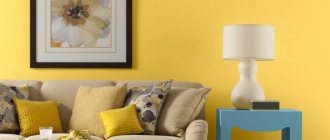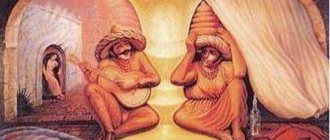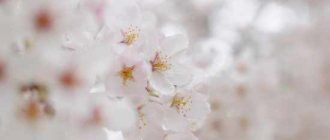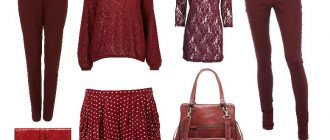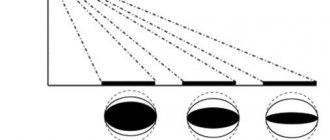Article for the "bio/mol/text" competition: Few people know that the biophysics of sensory systems has its own name - psychophysics. One of its most interesting areas is the psychophysics of color. Color is a property of objects in the material world, perceived as a conscious visual sensation. This or that color is “assigned” by a person to objects in the process of their visual perception. This is successfully used by advertising agents all over the world. Create an advertisement, a sign so that people remember it and attract customers? Easily! Remember that when you mention a product, store or establishment, you immediately imagine its color scheme, used in advertising, in a logo or in packaging. This article explains why we are so sensitive to color advertising.
Color perception - how does it function?
Color perception is one of the functions of vision, thanks to which a person perceives the world in all its variety of colors and shades. The refractive system of the eye and the retina, on which light rays are collected after refraction by the lens and cornea, are responsible for image formation. The color of the picture is determined by the central point of the retina - the macula, or more precisely, the cones. These photoreceptors provide color vision and are involved in photopic (daytime) vision.
There are three primary colors in nature: red, green, blue. The entire variety of shades, of which there are several tens of thousands, is formed by mixing these three main tones. This theory was put forward by Lomonosov in 1756. T. Jung conducted his research in the same direction. Subsequently, the idea of three-component color perception was supplemented by G. Helmholtz and his students. There are three types of cones, each containing a specific pigment. In other words, the macula contains blue, red and green cones. In this case, color waves, regardless of their length (spectrum), immediately affect the entire cone apparatus. If there are any defects in it, the color perception will be incorrect. In this case, we are talking about color vision disorders. They are caused by pathologies of the optic nerve, retina, and nervous system.
Color vision disorders are rare. Approximately 8% of all men have congenital impairments of this visual function, but this does not mean that they cannot distinguish colors at all. In most cases, one of the spectra is not available to them. In women, problems with color perception are even less common (approximately 0.5% of cases). Color vision disorders can create some difficulties when choosing an activity. Information is often presented in the form of color signals - in transport, industry, agriculture and other areas.
Luscher color test
Psychologist Max Luscher studied the phenomenon of visual perception for a long time. As a result, data were obtained on the direct relationship between the psychological state of an individual and the most preferred colors. Luscher created a unique method of color diagnostics. It was called the Luscher test.
Let's talk in general terms about a simplified, but quite informative, version of the test.
The test is carried out by laying out cards painted in eight different colors according to the principle of decreasing liking for colors. The cards are assigned serial numbers:
- primary colors : blue (1), green (2), red (3), yellow (4);
- auxiliary : purple (5), brown (6), black (7), gray (0).
When taking the test, you need to distract yourself from the relationship of colors with each other. Perceive only the color itself abstractly, without any assessments, do not think about whether you like clothes of this color, whether similar tones are acceptable in the interior.
This procedure is carried out twice. When making a choice a second time, you don’t need to think or remember which tones were chosen earlier. This will result in two rows of numbers that need to be written down in order of preference. Based on the data obtained during the test, a person receives a comprehensive analysis of his personal psychological state.
Interestingly, the Luscher color test is sometimes used as an auxiliary diagnostic method when making a medical diagnosis; it can warn of the occurrence of painful conditions: heart failure, compression of cerebral vessels, malfunctions of the gastrointestinal tract.
The objectivity of the test is determined by the perception of color through contrasts. So, if the body is subject to excessive stress, needs peace, tranquility, emotional and physical rest, stress relief, the choice will instinctively fall on darker colors. If there is a desire for energetic activity, creativity, the result of the choice will be brighter tones.
Colorblindness (the inability to distinguish one or more colors) does not prevent you from taking the test and obtaining reliable results.
The colors for the test were carefully selected based on psychological and physiological meaning. This data is universal for any person. The main condition is a clear understanding of how the diagnosis is carried out: the subject must arrange the colored cards in order of their preference on an intuitive level.
Interpretation of test results is carried out based on the transcript:
- place (order) of each card;
- the meanings of the selected colors;
- values of the color ratio in pairs of cards that are in the same position for each choice (for example,
- with the first choice, green took the leading place, and with the second, yellow).
People taking the test are often shocked that simply laying out colorful cards can reveal such a deep psychological state.
The influence of color on a person
Today, psychologists also study the problem of the influence of color on humans. From their point of view, certain shades carry emotional information and, therefore, participate in the formation of mood. Such data can be used to make your image more attractive, your environment more comfortable, and your products and services more salable. Colors can be used in the treatment of diseases of the nervous system, in marketing and other areas. Many people are skeptical about this. Indeed, such theories are difficult to study and cannot always be scientifically proven. However, they should not be completely rejected. Let's find out what they are, how colors influence a person and his life.
Brief meaning of card positions
The color of the very first card in each row means the method of moving towards the goal, the state in which a person strives to achieve what he wants. For example, if the color blue comes first, then the main method is peace and tranquility.
The second position is the true goal, what a person strives for.
The third and fourth places reflect the situation and circumstances of the current period of life at the time of testing.
The fifth and sixth cards represent indifference; their meaning is not rejected, but has no place in the current situation.
The seventh and eighth are hostility, rejection, antipathy, forcedly suppressed needs.
Features of color perception
Human perception of color is subjective. Some people like warmer shades, others prefer cool tones. Moreover, the same color can be perceived differently by people. Of course, there are general patterns. So, according to survey results, most people love the color blue. Why him? What determines the choice of shade?
There are three theories to explain this issue:
- evolutionary;
- theory of gender schemas;
- ecological valence theory.
What is the essence of each of them?
Biology or evolution. According to this theory, biological mechanisms formed during evolution determine human color preferences. So, initially the color blue was associated with the night, and therefore with calmness and passive pastime. Yellow hues, which resemble the sun, correlated with activity. Why, then, do men like blue and women like pink? These differences were caused by evolutionary changes that occurred during the times of gathering and hunting. In the early era, women had to cook food and pick fruit. They are mostly red and yellow and stand out well against the green foliage. It is for this reason that the fair sex prefer all kinds of shades of red and yellow. Proving this theory is quite difficult. The other two hypotheses explaining color preferences look more convincing.
Gender schema theory. The formation of color preferences is influenced by gender. This is what the supporters of this theory say. From a psychological point of view, color perception is established in childhood, as soon as the child begins to realize his gender identity. After this, they search the world for information, including colors, that is associated with their gender. Parents reinforce gender stereotypes. They dress boys in blue or dark colors, girls in pink. Because of this, girls subsequently gravitate towards this color, and guys towards blue. A study was conducted in which specialists observed children from 7 months to 5 years. The boys became more and more distant from pink tones the more they learned about their own gender. The same pattern was found among girls. They increasingly preferred pink shades.
Ecological valence theory. The previous concepts partially explain people's color preferences. But these theories are general. They are not able to answer the question why a person loves dark blue, light blue, soft pink and other shades. Where does such a variety of tastes come from? The theory of ecological valence tried to answer this question. According to her, color perception is formed on the basis of emotional experience. A person will like more those shades that he associates with something positive, joyful, and pleasant.
To prove this theory, scientists conducted a study. In it, subjects were offered two pens of different colors with musical accompaniment. One color was accompanied by unpleasant music, the second by positive music. Most people chose pens that were associated with good music. The advantage of this theory is that it does not reject the ideas of its predecessors who formalized the theory of gender schemas. Please note that boys are often given blue toys, and girls are given pink ones. Toys evoke positive emotions. In the future, color will only be associated with good things. According to the ecological valence, which gave the theory its name, we understand the ability to adapt to environmental factors.
Story.
Interest in the study of color arose when primitive people learned to extract and make natural paints. From this point on, colors were inextricably linked with magic and religion. The importance of knowledge about color perception and the need for its application in various fields of science was discussed back in Antiquity. In his writings, the ancient Greek physician Empedocles identified each element with a separate color. And the founder of philosophy, Aristotle, compared the color scheme to musical harmonies.
Do you want to make better decisions, find your ideal career, realize your maximum potential and receive instructions for individual development?
?
All this can be done using the Human Design
. Build your map and get basic decryptions for free.
The principles of the influence of color on the human psyche have always been of interest to artists and architects . The first to create a harmonious system of color perception and identify six basic colors was Leonardo Da Vinci . He also introduced the concept of color contrast, paired shades, and also noted that the perception of white depends on the environment. In the 15th century, the Italian painter Gian Paolo Lomazzo compared color shades with different temperaments.
, Isaac Newton's achievements in physical optics almost stripped color of its theological content. One of the first to talk about the relationship between “individual colors and special mental states” was the German poet Goethe . After several decades of work, he published the book “The Teaching of Color,” which he himself valued higher than his poetic achievements. Later, scientists started talking about the healing properties of color. Thus, the great Russian psychiatrist Bekhterev argued that “an attractive color scheme heals better than any medicine...”.
Human perception of colors and their meanings
The emotional background that surrounds a particular shade can be explained by the theory of environmental valence. However, it is powerless in understanding the problem of the semantic meaning of color. Why is each of them associated with something? For example, red - with passion? The theory of associative networks provides answers to such questions. A network of interconnected knowledge develops in the brain over the course of a person’s life. They are based on emotions, sensory experience and semantic meaning. In this theory, these factors are called “nodes”. Each color has its own node in the brain. It can change over the course of life, that is, as a result of gaining new experiences. Important events form strong knots. So, for example, if a person was hit by a red car, a node of this particular tone will form in the head. It will be associated with certain emotions. Subsequently, other feelings may be added to them.
Psychologists often assign color one meaning or another. Blue is considered calm, black is down-to-earth, and yellow is cheerful. Actually, this idea of colors is common to many, but color psychology itself is not so simple. There is no single meaning that would describe color as completely and succinctly as possible. People can attach completely different conflicting meanings to a particular shade based on their own experiences. For example, funeral service workers are accustomed to being among black objects. It is not surprising that they associate them with grief. People who like to ski perceive the color white positively. It is associated with snow and the pleasant emotions received during skiing.
These are not all the factors influencing the perception of color. Culture plays an important role in this. There are some regularities: in the West, people prefer blue. In the East, this same color is perceived as cold; it is associated with negativity and even evil. Many peoples of Africa perceive white as a negative color, while black, for obvious reasons, is preferable for them.
There is another significant factor - context. In everyday life, many people associate the color red with passion. During the years of revolution, red tones symbolize the blood shed by the people. Why is it important to study such questions? How can this information benefit you?
Firstly, it will be easier for each person to organize their workspace or everyday life. Knowing your color preferences and the tastes of your relatives, you can create a more comfortable atmosphere at home. Secondly, studying color perception can be useful in marketing. Before you start selling your product, research your target audience. When selling pots and pans, you can choose black color for the handles - in this case it is more practical. Thirdly, colors help heal. Color therapy is based on this position. A specialist can find out which shades are positive and negative for a person, and then use them to influence the patient’s psycho-emotional state.
Characteristics of cold shades
These include the following colors:
- violet;
- lilac;
- green;
- turquoise;
- blue;
- blue.
Violet
This shade is obtained by mixing red and blue. In psychology, the color purple is associated with sensuality, compassion and detachment; some scientists characterize it from the depressive side. It is believed that this shade is preferred by dissatisfied and gloomy people. This color is also loved by self-critical individuals. Too much purple causes melancholy, but using the shade in moderation helps improve self-esteem.
Other shade characteristics:
- heavy;
- calm;
- saturated;
- mystical;
- cold.
On a note! The color violet unites the spiritual with the material.
This color is often present in the clothing of priests and kings, it is the shade of healers and creative people. Psychologists do not recommend using the color purple when working with young children, mentally unstable people, and the elderly.
blue tint
Blue vibrations have a large amount of magnetism; this tone symbolizes the Universe. Blue color in psychology is used in meditative techniques to immerse oneself in a contemplative state and think about the meaning of life. These are vibrations of inner balance and wisdom, physical and mental relaxation. It is preferred by people with a stable life position, spiritualized and harmonious. They are distinguished by purposefulness and dedication, devotion to high ideals and rigor of views.
Application of blue:
- development of mental abilities;
- relieving stress, anxiety and phobias;
- development of intuition;
- clearing negative thoughts.
This shade calms the nervous system, pacifies desires and extinguishes passions.
Green tone
Green color in psychology is perceived as a symbol of rebirth, renewal, peace and transformation. It is used in healing practices and to achieve relaxation.
Application of green:
- relieving stress and fatigue;
- liberation of the sensory sphere;
- eliminating negative thoughts;
- eliminating anger and imbalance.
However, prolonged concentration on green evokes boredom and melancholy. This color is preferred by balanced and calm people, characterized by efficiency and realistic meaning. The combination of a green tint with depressive vibrations is perceived beneficially by the psyche: the green tone neutralizes the depressiveness of purple and black.
Turquoise shade
This color is one of the coldest of the entire palette of colors. He leaves no one indifferent and attracts glances. This color is used in healing, to awaken creativity, to pacify and cool ardent desires. You can feel the coolness of the sea surf in it.
Lilac shade
This tone is perceived as a sign of affection and kindness. Vibrations of color give a feeling of floating, give peace of mind and put you in a philosophical mood. This color is liked by people with a fine mental organization, romantic and sensual, sentimental and dreamy. They are always ready to respond and support in difficult times, they are distinguished by their ingenuity and sound mind.
Blue tint
The blue tone is associated with the sky; it carries vibrations of comfort, reliability and security. This color calms you down and makes you forget about everyday problems and worries. The blue tone is preferred by office workers, self-sufficient people: they know how to achieve their goals without unnecessary noise and conversation. This tone stimulates creative thinking and is recommended for use in classrooms and studios.
However, too much blue will cause laziness and loss of interest, so moderation should be used. This feature of the blue tone is used to calm the psyche for insomnia and to relieve negative feelings. If you need to detach yourself from the outside world to deepen your thoughts, use a blue tone.
How can you make a color “good”?
So, it was previously noted that human perception of colors is subjective. Everyone can see different shades, associating them with good or bad emotions. But at the same time, almost any color can be made positive. When choosing a shade, consider three factors: appropriateness, aesthetics, and meaning. The meaning of color was discussed above. As for relevance, everything is quite simple here. For example, it is better to choose a brown table rather than a blue one. Aesthetics is a more complex factor. It is important to rely on good taste here. When decorating an apartment or office, or selecting clothes, take into account the opinions of designers, stylists and other specialists in this matter.
Color therapy is not a science, but a teaching, one of the methods of treatment. However, it cannot be template. Psychologists are constantly studying the problem of human perception of color. On the one hand, you yourself can try to determine how this or that shade affects your mood. On the other hand, there are no absolute laws. Preferences may change over the course of a lifetime.
Color in advertising
In an advertising message, the choice of color cannot depend only on the taste of the designer. After all, bright colors can both attract the attention of a potential client and make it difficult to obtain the necessary information. Therefore, the perception of an individual’s shape and color must be taken into account when creating advertising. Solutions can be the most unexpected: for example, against a motley background of bright pictures, a person’s involuntary attention is more likely to be attracted by a strict black and white ad rather than a colorful inscription.
Emotional associations.
This is the ability of flowers to influence the nervous system. For the study, pure, saturated colors were taken.
Active, stimulating colors.
The warm group of colors has these properties. Red and orange shades activate the body, excite the nervous system, revitalize, give energy, and stimulate action. Red and orange are the most potent, purple is less active. Yellow has the same effect, but slightly. Warm colors have an invigorating, awakening effect; in reasonable quantities they cause an upbeat, joyful mood. In large quantities and with prolonged exposure, active colors exhaust, irritate and tire. Therefore, the best use for them is accents. When the color is diluted, the activity decreases.
Passive and calming colors.
These are cool shades: green, blue, indigo and violet. They inhibit the nervous system. Rooms painted in cool colors have a relaxing effect, promoting balance and restraint. In large quantities they can cause despondency.
The choice of color helps to solve some practical problems, for example, in the interior. What colors to choose for the bedroom – warm or cool?
A bedroom in blue tones will help you fall asleep faster, but in orange it is unlikely. But anyone who is familiar with the additive and subtractive formation of color will surely figure out how to correct this drawback of an orange bedroom at night with the help of lighting. But in the morning, orange color will help you wake up faster.
People in a good mood are more receptive to red, orange and yellow, while people in a bad mood are more receptive to blue and green.
Colors that are neutral in temperature do not have such a pronounced effect.
Yellow and green promote an even, upbeat and calm mood.
Purple, on the contrary, is depressing. This applies to large areas of dark color; a bright and rich violet tone is closer in properties to active colors. Here we come to the influence of brightness and saturation on color properties.
Black and dark gray colors are calming and depressing to the nervous system. Therefore, colors with their addition acquire appropriate properties. This especially applies to dark blue, dark purple and dark green tones. In large quantities they suppress the psyche.
Dark red-orange tones, that is, brown, are more balanced, like a mixture of passive and active, and therefore do not have such a strong effect on emotions.
White and light gray colors are neutralized when added. They soften and smooth out the emotional impact of color, making it lighter.
The addition of achromatic colors has a particularly strong effect on warm shades. For example, red with the addition of white, gray and black becomes less active and exciting. Light red, or pink, acquires the properties of white, becoming lighter and calmer. Dark red takes on the properties of black, becoming heavy and monumental. Gray adds coldness, distance and calmness to red; in large quantities it greatly changes the properties beyond recognition. The character of yellow and orange shades is preserved only in rich and light colors. Adding white makes them lighter and calmer. Gray and black, even in small quantities, greatly dampen the properties and make it heavier.
Saturation also affects emotional properties. And this influence is stronger than tone temperature.
Therefore, it is possible to compare the effects of warm and cold tones only when their brightness and saturation are the same.
Pure and combinations of pure colors are active colors. It’s not for nothing that they are used where activity is implied: on playgrounds, in sports and entertainment complexes, shows and advertising. Weakly saturated and muted colors and combinations, on the contrary, help to concentrate; they are used where intrusive colors are inappropriate and should not distract or irritate. These are, as a rule, premises for work, rest, and study.
Other associations.
Colors are also endowed with other properties, mainly due to natural associations. The cultural or individual properties of color are very varied and almost endless.
Dry: yellow, orange, red. Wet: blue, blue, green.
A simple associative series operates here. Sun, sand, fire cause warmth and dryness. Water, clouds, plant leaves are wet.
Cool, light and muted shades are perceived as liquid or transparent, these are the colors of air and water.
Warm, dark and rich shades appear dense, dense and opaque.
Sunny colors: light, warm, rich. Shadow colors: dark, cold, desaturated.
Fresh colors: blue, turquoise, yellow, lemon.
Color associations are numerous, and contrasts in properties are widely used. For example, in painting, emotions and mood are often conveyed using color associations.
Continued: color types >>
Weight associations.
Colors are divided into light and heavy. Skillful use helps to create a balanced and balanced composition, correctly decorate the interior or choose a wardrobe, visually improve the room or figure.
Associations with weight arise mainly due to lightness. There is a fairly simple principle at work here: the lighter the color, the lighter it appears.
Light colors include white, yellow, blue, light green, turquoise and other light shades.
Red, blue, violet, magenta, black, dark gray and other dark colors are considered heavy.
Dilution with achromatic colors changes the properties. White color adds lightness, black adds weight. This is quite easy to remember using the familiar color ball model.
How does saturation and tone affect the weight sensations of color? There is no clear answer here; this is an area of individual perception. However, from equally light and saturated tones, cold ones will seem lighter. This is where other associations come into play.




